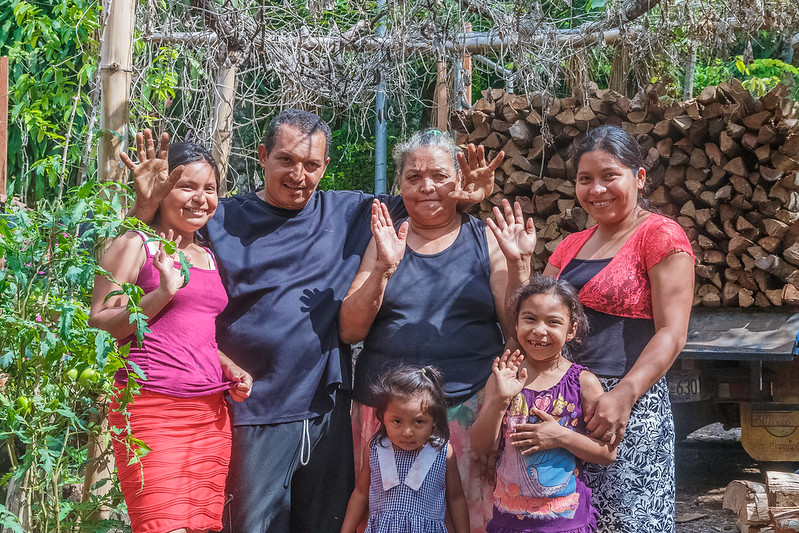How Social Issues are Causing Poverty in El Salvador
 El Salvador is a small nation in Central America sharing borders with Honduras and Guatemala. A poor education system, high crime rate (namely because of gang warfare), homelessness and high migration, all represent the social issues in El Salvador. These social problems have been a catalyst for poverty in El Salvador, where 26% of Salvadorans live below the poverty line. This is significantly worse than the international poverty average of 9.2%, highlighting the troubling situation in El Salvador.
El Salvador is a small nation in Central America sharing borders with Honduras and Guatemala. A poor education system, high crime rate (namely because of gang warfare), homelessness and high migration, all represent the social issues in El Salvador. These social problems have been a catalyst for poverty in El Salvador, where 26% of Salvadorans live below the poverty line. This is significantly worse than the international poverty average of 9.2%, highlighting the troubling situation in El Salvador.
Crime
Crime, particularly gang violence, is a major contributor to poverty in El Salvador. The country’s homicide rate is one of the highest in the world; in 2022, there were 7.8 homicides per 100,000 people.
Gangs and criminal organizations frequently introduce drugs and gun violence to the population, particularly the El Salvadoran youth. Furthermore, many young people are indoctrinated into these gangs.
The power and influence gangs have in El Salvador, especially in poor outskirt neighborhoods, hinder any growth potential in such areas. According to a Global Majority E-Journal, El Salvadoran gangs ”impose their own law” on neighborhoods, and this ”blocks off alternative ways of life” for people living in places where gangs have power. As a result, many citizens are unable to access new opportunities and growth.
On the bright side, the crime rate in recent years has slowed. In 2020, El Salvador had a crime index of 68.0, ranking as the ninth highest globally for crime. This later decreased to a score of 64.4, with El Salvador dropping to 17th in 2023.
Education
The poor education system in El Salvador is also a driver of poverty. While 11% of children do not complete primary school, this figure goes to a 22% incompletion rate at secondary levels. This is indicative of a problem of high dropout rates and incomplete education among the El Salvadoran youth, according to a 2018 report.
The disparity between the wealthy and poor in El Salvador’s education system is a major reason why it contributes to poverty. According to Global Majority E-Journal, the government “discriminates” against poor children in favor of wealthy children. Consequently, poor children either can’t attend or are less motivated to attend school. In turn, this averts any advancements or opportunities the affected children can take advantage of, plundering them deeper into poverty. As a result of the wealthy/poor divide, the state of wealth distribution also worsens.
Poor attendance at school, particularly among the poorest children, provides opportunities for gangs to recruit members. This also contributes to higher crime and diverts these children from pursuing legal and skilled work.
Migration
As a consequence of high crime rates and poor education, alongside low levels of living standards, many El Salvadorans choose to migrate – the United States (U.S.) is their most popular destination. Migration numbers tell the story. In 2019, 1.6 million people (25% of the population) lived abroad, with 90% living in the U.S.
Similar to the issues faced in education and crime, the migration problem is also responsible for the lack of growth. Limited personnel in labor due to migration particularly affects El Salvador’s youth. Of those unemployed, 40% are aged 16-24.
Domestic policies that aim to increase government autonomy and “promote public/private sector” partnerships also aim to encourage El Salvadorans to stay. Furthermore, U.S. aid and development plans in Central America seek to reduce the poverty rate in El Salvador. Around $500 million in U.S. aid in 2021 was put toward Central American development. In El Salvador, the U.S. hopes that funding will “reduce irregular migration from the region and improve livelihoods at home.”
What’s Next?
Despite the many social issues in El Salvador, there are positive signs of progress. The country has experienced a decrease in its crime rate in recent years, offering hope for improved safety and stability. Efforts by both the domestic government and international partners, such as the U.S., aim to address the root causes of poverty in El Salvador and promote development, with a focus on education and livelihood opportunities for the youth. These initiatives provide a glimmer of optimism for a brighter future for the people of El Salvador.
– Max Steventon
Photo: Flickr
